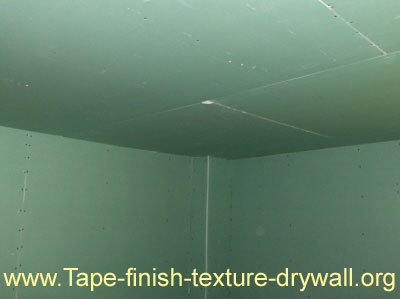Important Tips
On Hanging Drywall

Although the main focus here is on drywall finishing and texturing, the following tips on hanging drywall will prove to be invaluable. They cover the most commonly misunderstood parts of the drywall hanging stage. If you want to build solid walls that will last forever and continue to look great then youll need to make them solid in the hanging stage. Think of the taping & finishing stage as nothing more than cosmetic.
Taping the joints and coating them with joint compound does add strength to the wall, but you cant rely on this alone to remedy "loose" drywall panels. Many people apply joint tape over loose drywall panels and smashed, frayed edges - thinking that the joint tape will remedy the problem.
Then when the joints begin to show and the nails/screws "pop", they usually assume that theres some sort of a scientific or technical cause for the problems. In most cases, the real culprit is just negligence of the basics. Skim through these pages and youll understand why the professional never has problems with multiple nail pops, tub / shower units that just keep cracking at the wall, and the many other problems that are so common for the novice.
| 









